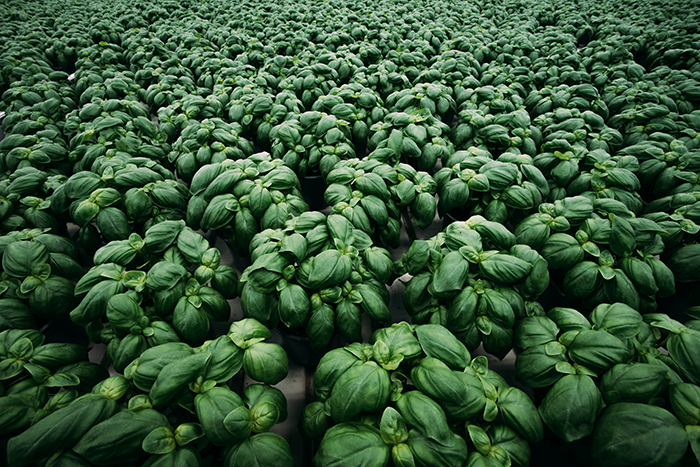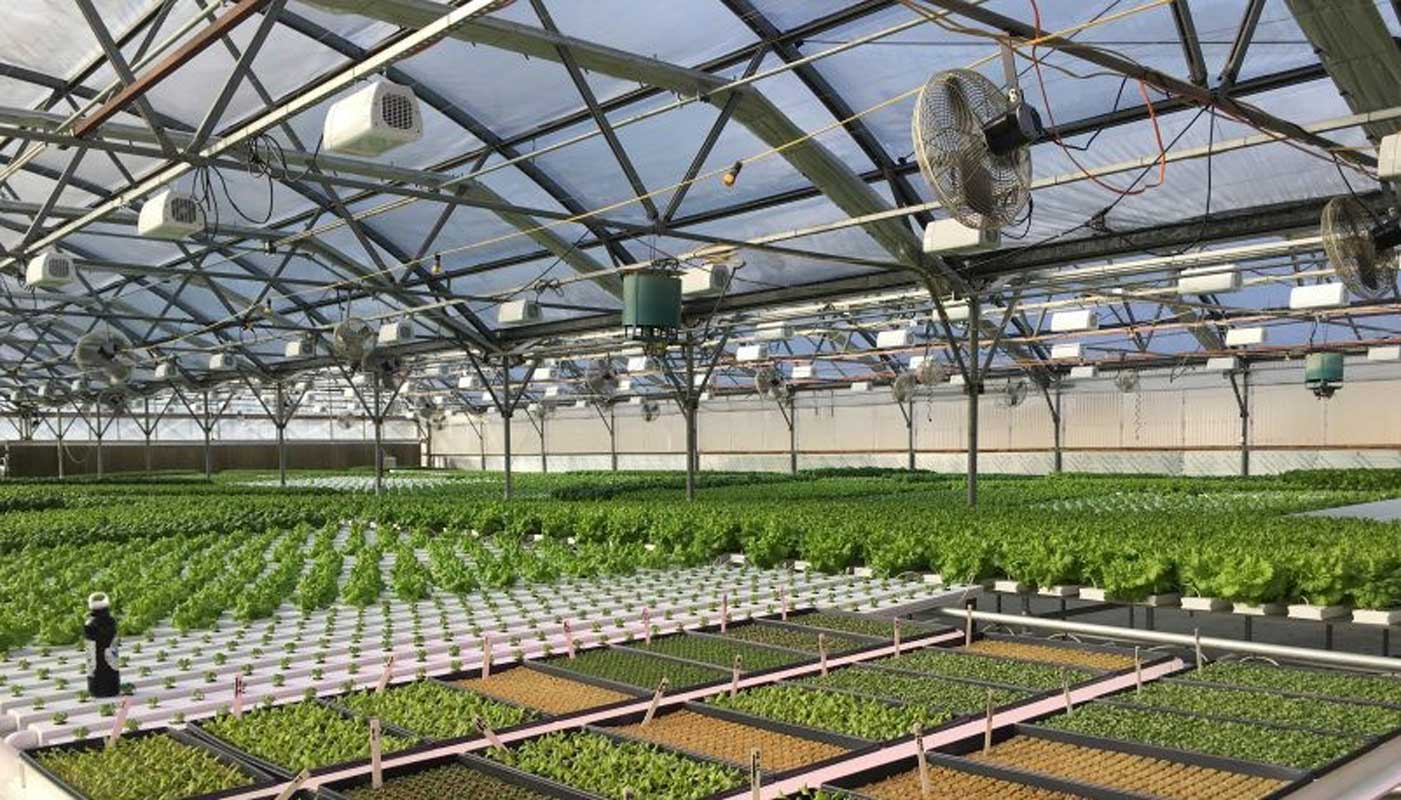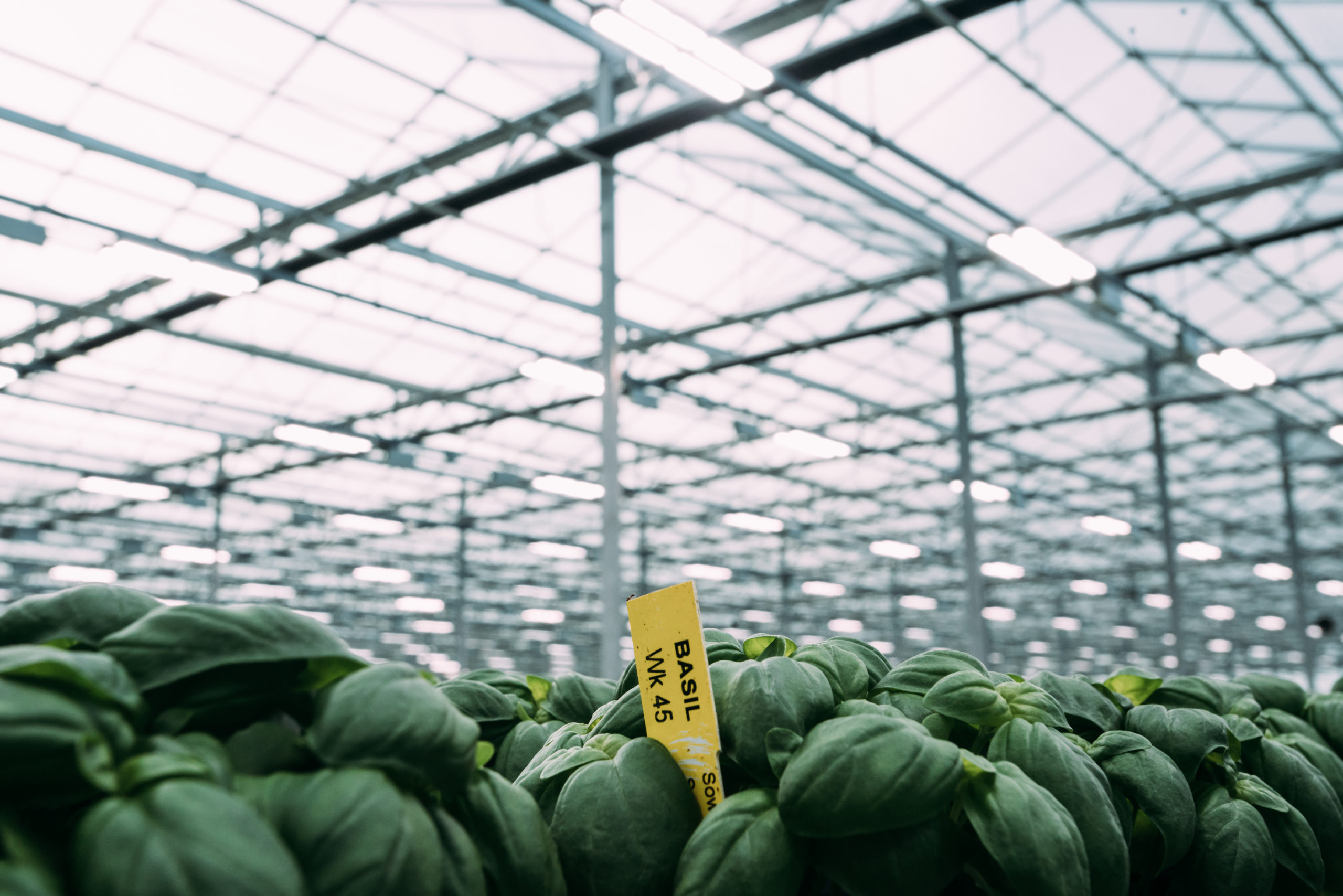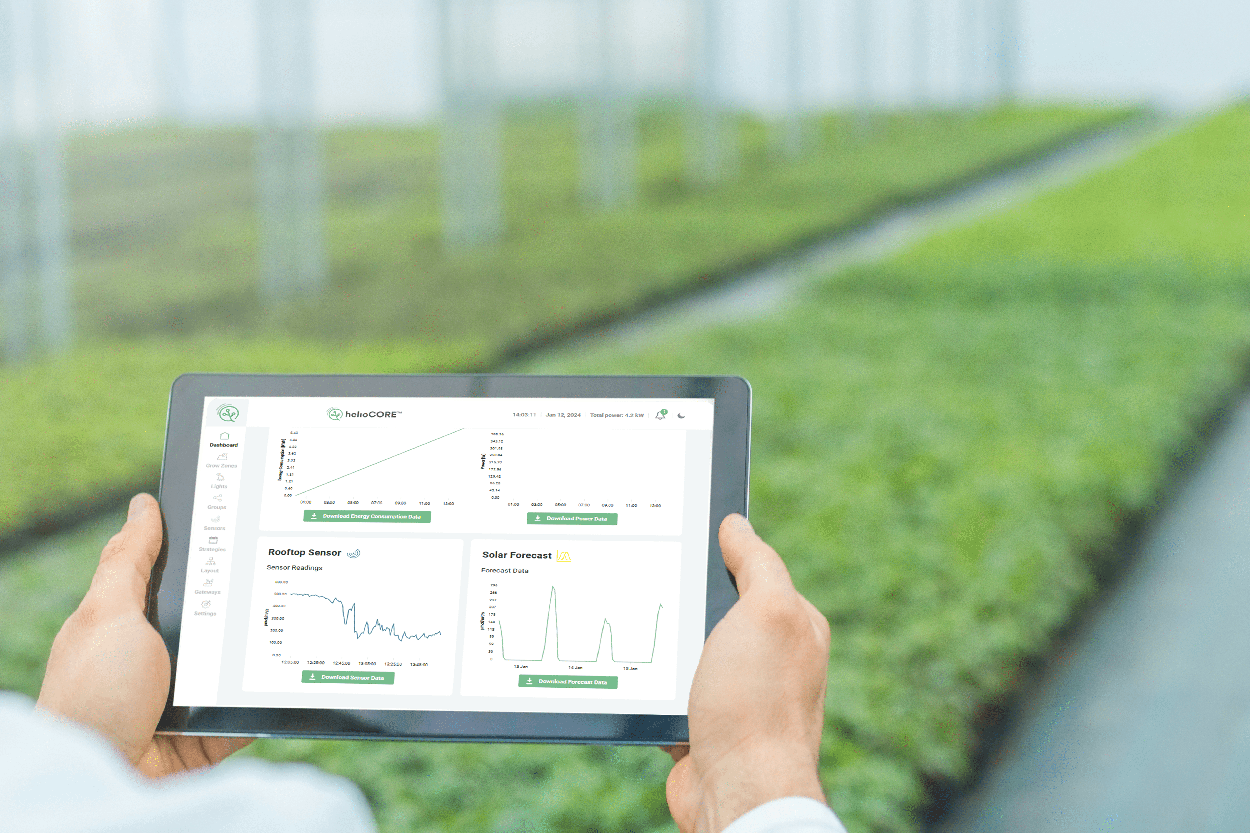Research
Articles
During winter months the reduced natural light levels are noticeable on shorter days and lower intensities, often with snow or rainy weather conditions. This affects the production time as well as the quality of leafy greens. By adding supplemental light, the grower can extend the photoperiod and increase the light levels in the greenhouse. Together with the grower Pawel Jacewicz, we looked on the potentials of two different light levels, 130 µmol and 200 µmol, for herb production. Our aim was to see how LED lighting could be used to grow basil faster than its usual winter production, and to evaluate the quality. Basil was seeded in December and harvested in the first week of February, which means the production was studied during the darkest period of the year. The basil under the 130 µmol was seeded two days earlier than the ones under 200 µmol .
Both levels of supplemental lighting supported a healthy and high-quality basil during winter production. Despite being seeded later, the basil grown under the higher light intensity exceeded the basil grown under the lower light intensity in both height and biomass. The basil grown under the higher light intensity (200 µmol) grew faster compared to the lower (130 µmol), indicating that more light is beneficial to speed up production during the low light winter months.
The potted basil was packaged in sleeves and sent to the resellers 8-10 days earlier than expected for winter production of potted basil, reducing production time by ~18 %. At harvest, the quality of the produce meets the grower’s satisfaction.
Besides looking at the production time, we also tracked the health of the plants throughout the trial. Notably, there were no reports of low plant health at any growth stage. The plant quality was also tracked throughout the trial with no reports indicating bad quality of the plants at any growth stage. Finally, the grower conducted an evaluation of the crop at the end of production, as shown in Table 1.

Table 1. The quality of the basil at the harvest.
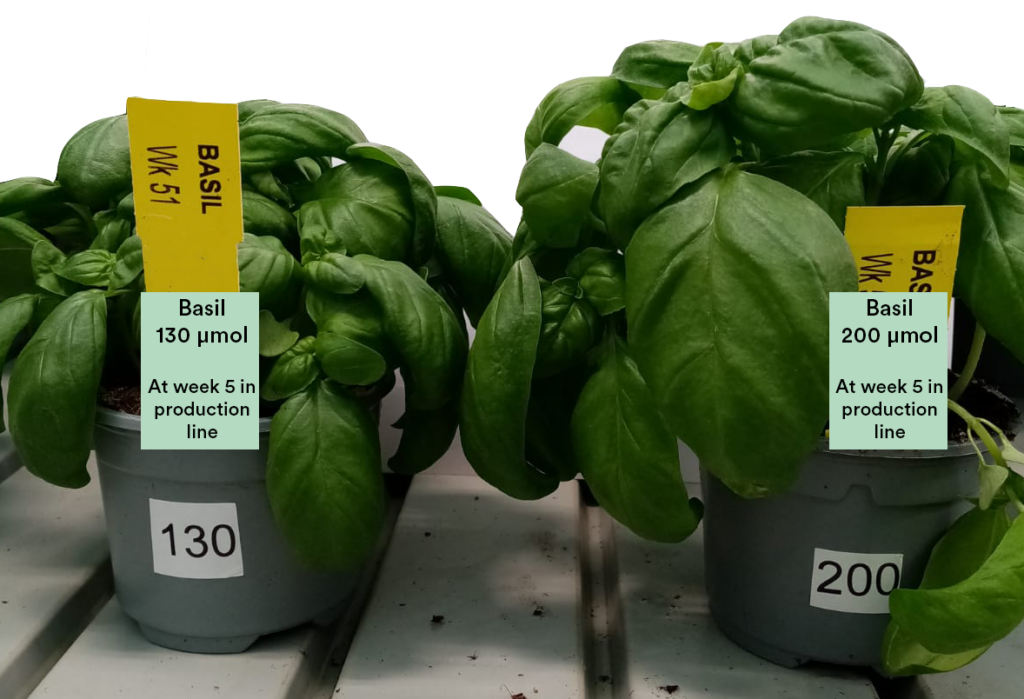
Picture 1. Basil in week 5 of production, left 130 µmol and to the right 200 µmol.
Although the basil gave the same results in terms of health and quality, there was a visual difference in size, with basil grown under higher light intensities being taller and larger than basil grown under lower intensities (Figure 1). We could also see that the roots of the basil grown in 200 µmol was more developed (Picture 2), however both LED grown basil was showing white and healthy root system.
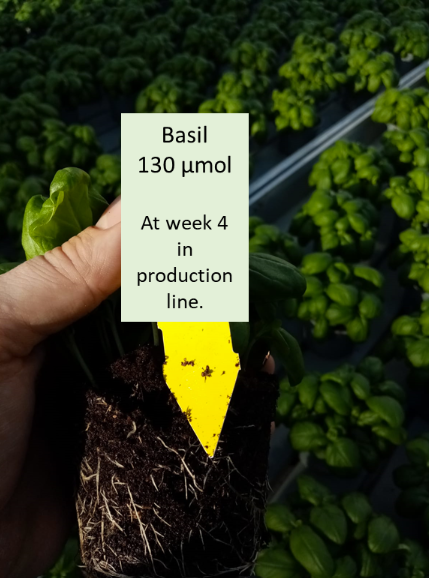
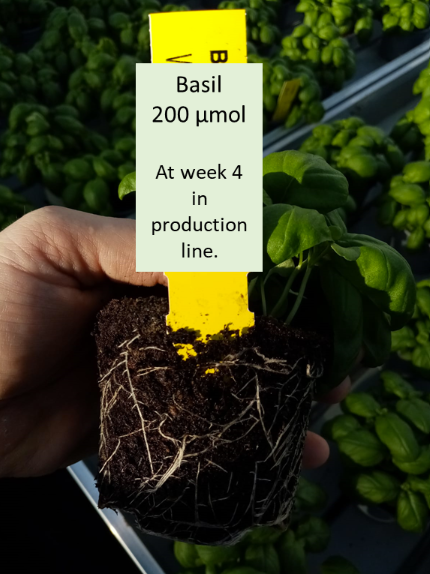
Picture 2. Root development in week 4 of production, left 130 µmol and to the right 200 µmol.
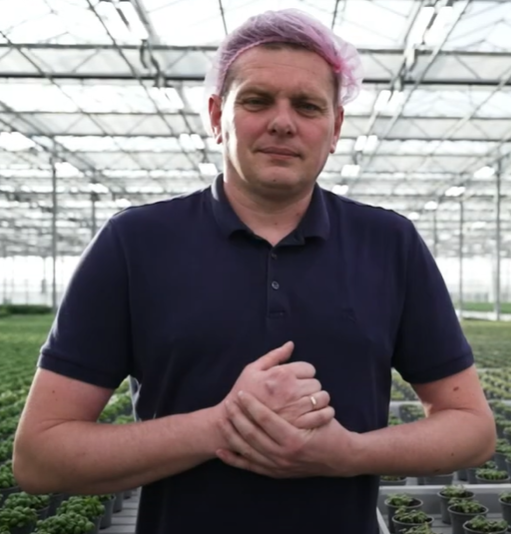
Pawel Jacewicz, Grower at Clay Lake, Bridge Farm Group

Ida Fällström, Plant & Light Expert, Heliospectra AB
Read next part of the research we did together with Pawel Jacewicz, grower at Clay Lake, Bridge Farm Group:
Higher pot density with higher light intensity >>
Related content
DLI Controller – helioCORE User Interface
Uncover light optimization, DLI targeting, and yield maximization strategies!
Get in touch with us!
From custom light planning, to tailored quotes, and everything in between,
our team of horticulture experts are always ready to assist.



